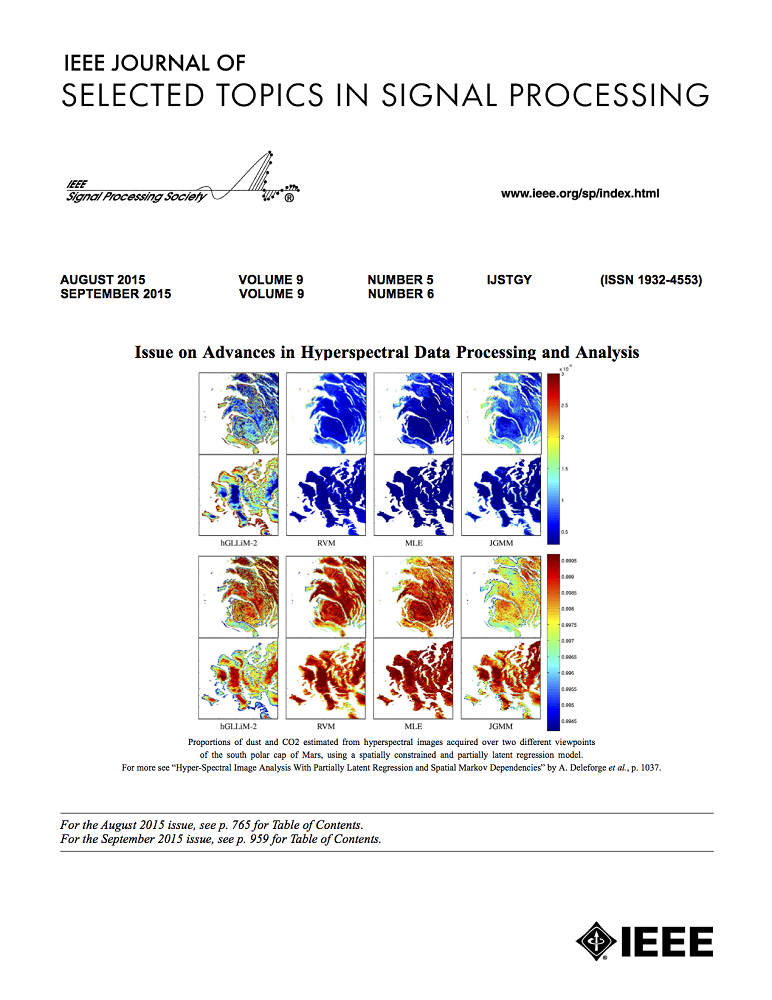基于Retinex分解模型的红外与可见光图像融合深度框架
IF 8.7
1区 工程技术
Q1 ENGINEERING, ELECTRICAL & ELECTRONIC
IEEE Journal of Selected Topics in Signal Processing
Pub Date : 2024-09-18
DOI:10.1109/JSTSP.2024.3463416
引用次数: 0
摘要
红外与可见光图像融合(IVIF)旨在整合传感器之间的互补信息,生成信息丰富的高质量图像。然而,目前的方法主要集中在传感器源特征的融合上,忽略了传感器自身特性导致的特征信息不匹配,从而导致信息冗余甚至无效。为了解决上述问题,本文基于RDM (Retinex Decomposition model)开发了一种端到端模型RDMFuse,该模型利用分层特征处理来缓解特征级别不匹配导致的融合性能下降。具体来说,由于红外图像只提供了场景固有属性的概述,我们首先使用RDM将可见图像解耦为包含固有属性的反射分量和包含照明信息的照明分量。然后,针对内禀特征的特性设计对比度纹理模块(CTM)和内禀融合函数,两者相辅相成,以较小的代价聚合源图像的内禀信息,使融合后的图像具有更全面的场景信息。此外,光照自适应模块以自监督的方式对光照分量进行优化,使融合后的图像具有合适的亮度分布。值得注意的是,这种机制隐含地提高了图像的熵质量,以改善环境因素引起的图像退化问题,特别是在黑暗环境下。大量实验证明了RDMFuse的有效性和鲁棒性,以及在高级视觉任务中泛化的优越性,因为融合后的图像对捕获的场景具有更好的可分辨性。本文章由计算机程序翻译,如有差异,请以英文原文为准。
A Retinex Decomposition Model-Based Deep Framework for Infrared and Visible Image Fusion
Infrared and visible image fusion (IVIF) aims to integrate complementary information between sensors and generate information-rich high-quality images. However, current methods mainly concentrate on the fusion of the source features from the sensors, ignoring the feature information mismatch caused by the property of the sensors, which results in redundant or even invalid information. To tackle the above challenges, this paper developed an end-to-end model based on the Retinex Decomposition Model (RDM), called RDMFuse, which utilizes a hierarchical feature process to alleviate the fusion performance degradation caused by the feature-level mismatch. Specifically, as infrared images only provide an overview of the intrinsic properties of the scene, we first use RDM to decouple visible images into a reflectance component containing intrinsic properties and an illumination component containing illumination information. Then, the contrast texture module (CTM) and the intrinsic fusion function are designed for the property of the intrinsic feature, which complements each other to aggregate the intrinsic information of the source images at a smaller cost and brings the fused image more comprehensive scene information. Besides, the illumination-adaptive module implements illumination component optimization in a self-supervised way to make the fused image with an appropriate intensity distribution. It is worth noting that this mechanism implicitly improves the entropy quality of the image to improve the image degradation problem caused by environmental factors, especially in the case of a dark environment. Numerous experiments have demonstrated the effectiveness and robustness of the RDMFuse and the superiority of generalization in high-level vision tasks due to the improved discriminability of the fused image to the captured scene.
求助全文
通过发布文献求助,成功后即可免费获取论文全文。
去求助
来源期刊

IEEE Journal of Selected Topics in Signal Processing
工程技术-工程:电子与电气
CiteScore
19.00
自引率
1.30%
发文量
135
审稿时长
3 months
期刊介绍:
The IEEE Journal of Selected Topics in Signal Processing (JSTSP) focuses on the Field of Interest of the IEEE Signal Processing Society, which encompasses the theory and application of various signal processing techniques. These techniques include filtering, coding, transmitting, estimating, detecting, analyzing, recognizing, synthesizing, recording, and reproducing signals using digital or analog devices. The term "signal" covers a wide range of data types, including audio, video, speech, image, communication, geophysical, sonar, radar, medical, musical, and others.
The journal format allows for in-depth exploration of signal processing topics, enabling the Society to cover both established and emerging areas. This includes interdisciplinary fields such as biomedical engineering and language processing, as well as areas not traditionally associated with engineering.
 求助内容:
求助内容: 应助结果提醒方式:
应助结果提醒方式:


